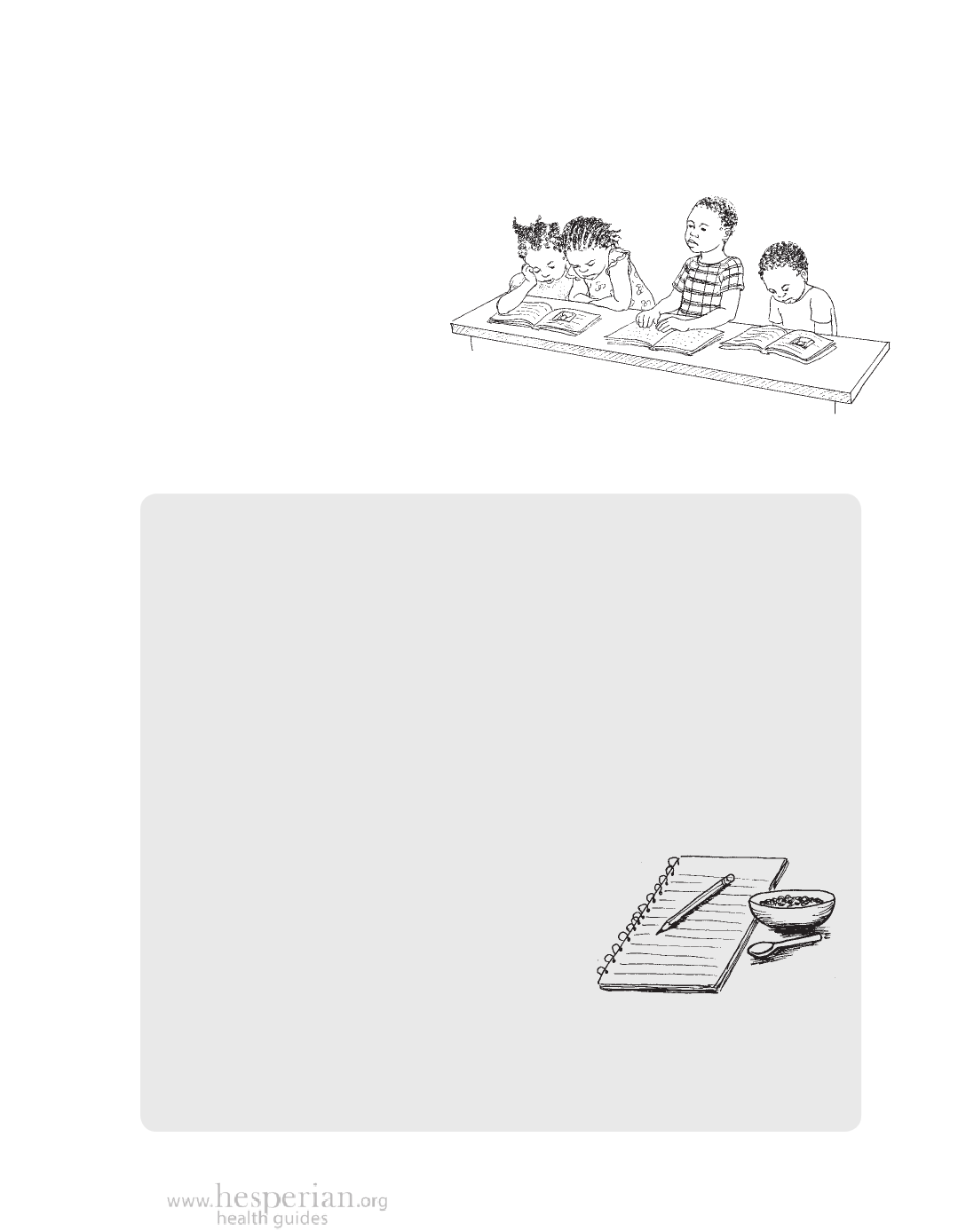
Social problems 475
Protecting Children
Children often work in mining to help their families. Working
long hours under difficult conditions
is dangerous for them, creates
serious problems for their growing
bodies and soft bones, and
leaves them no time to go to
school. Child labor is illegal
under international law
(see Appendix B). If mining
companies provided good wages
and benefits for adult workers, children
could go to school instead of to work.
School and nutrition for child miners
When men and women go to work in the stone quarries in India, their children
often go to work with them. This is the way it has always been. Without
education and organizing for change, this is the way it will always be.
In Pune, India, the children who work in the stone quarry are
malnourished and covered from head to toe in rock dust. Some social workers
started a volunteer group called Santulan to work with these children.
“Children have basic rights to education, good health, and childhood,” they
said. To promote these rights they started schools in the quarries.
First, Santulan trained new teachers. Some women quarry workers
were taught songs and other teaching methods, and given pencils, paper,
chalkboards, and books. Some quarry owners offered spaces for Santulan to
hold classes. In other quarries, the workers themselves organized classrooms.
Once the children started going to school, the
teachers realized they would not learn without food
to eat during the day. Santulan began to provide
rice, lentils, and boiled eggs. This gave the parents
another reason to let their children go to school.
Not only did the children learn, but they came
home with full bellies.
A few years after the quarry schools opened, over 3,000 children were
participating in classes. Many are the first in their families to read and
write. The children sing songs, learn history, and, above all, learn they have
the right to education and the right to childhood.
A Community Guide to Environmental Health 2012